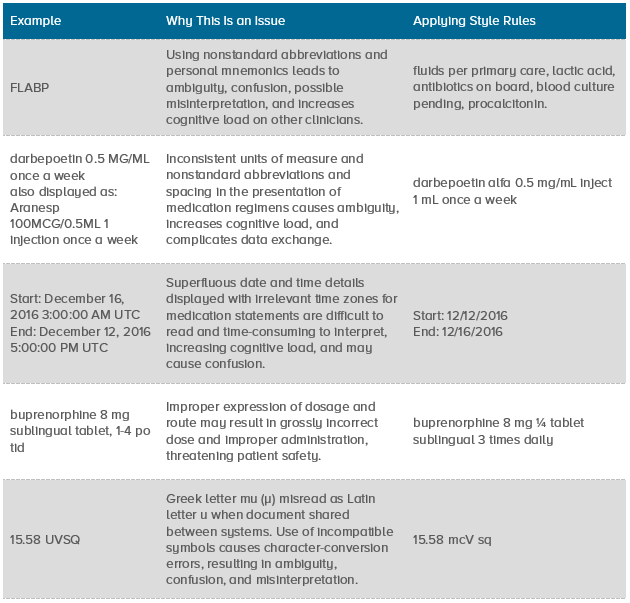
When using Consolidated Clinical Document Architecture (C-CDA) documents to share patient health records have you ever considered applying style rules?
Standards of style aren’t just about presentation – the unambiguous representation of data makes the patient's story comprehensible and usable for all stakeholders, including developers, implementers, clinicians and patients.
Improving the usability of the patient's story can lead to better communication, increased patient safety and decreased burden on the clinician. Style standards can be applied to any clinical information regardless of how it is captured, stored, or exchanged.
RELATED: From Devastation to Determination, One Advocate’s Mission to End Physician Burnout
Style Standards to Improve Usability and Reduce Cognitive Burden
Style standards address critical topics such as units of measure, medication regimens, abbreviations, chemical nomenclature, symbols, genetic nomenclature and classification systems. Applying style standards to narrative text representations in C-CDA documents has the potential to raise uniformity throughout the clinical record and support greater technical interoperability.
The following are actual examples of how information has been documented without style considerations. As you can see in each example, style choices can lead to ambiguity and confusion for the end user of the information.

A Deeper Dive into the Value of Style Standards
If you are interested in ways to decrease normalization challenges for electronic health record data, passionate about promoting patient safety through clear communication, or charged with addressing ONC’s directive to reduce documentation burden created by EHRs, HIMSS’s recent Health Story Project roundtable, Style Standards to Improve Health IT Usability and Reduce Physician Burden, shares how applying medical documentation style best practices yields big gains for data quality and significant reductions in physician burden.
The views and opinions expressed in this blog or by commenters are those of the author and do not necessarily reflect the official policy or position of HIMSS or its affiliates.
Discover the Power of Interoperability
Help advance interoperability and standards-based health IT systems that lead to meaningful health information exchange.
Originally published April 4, 2019



